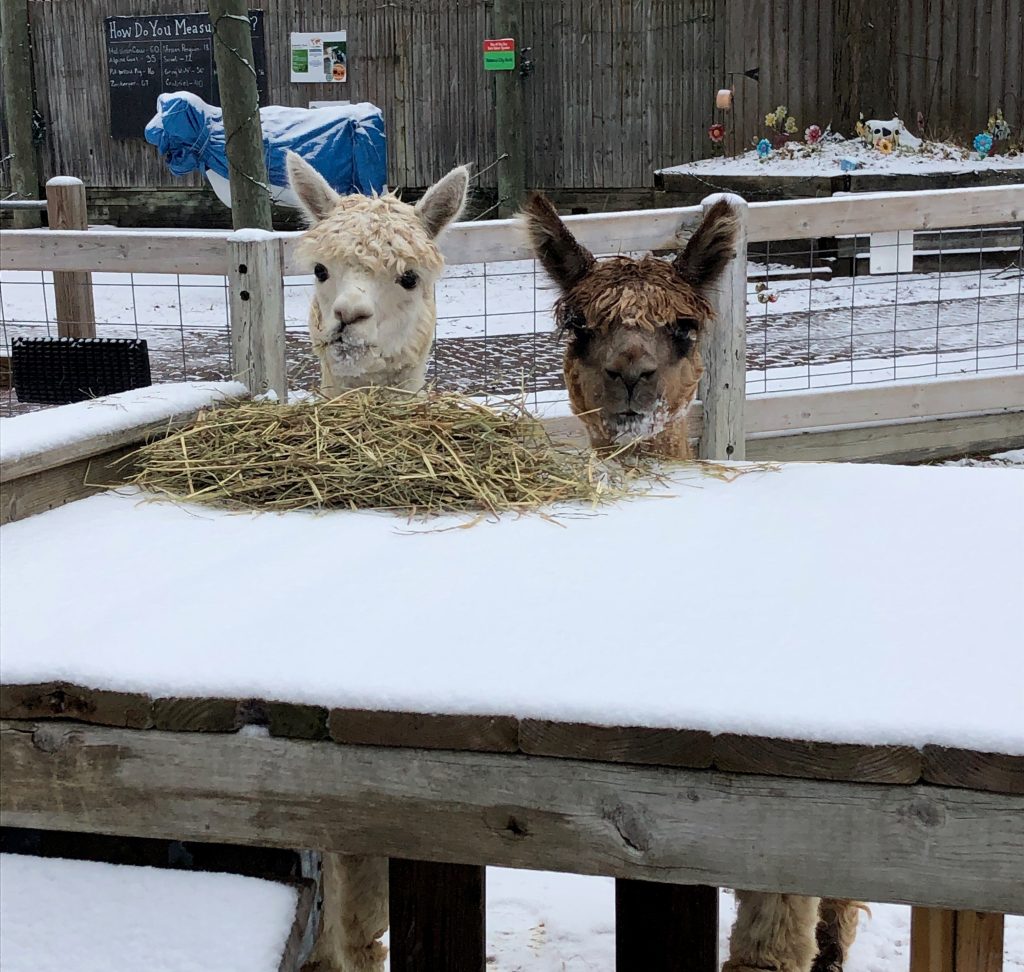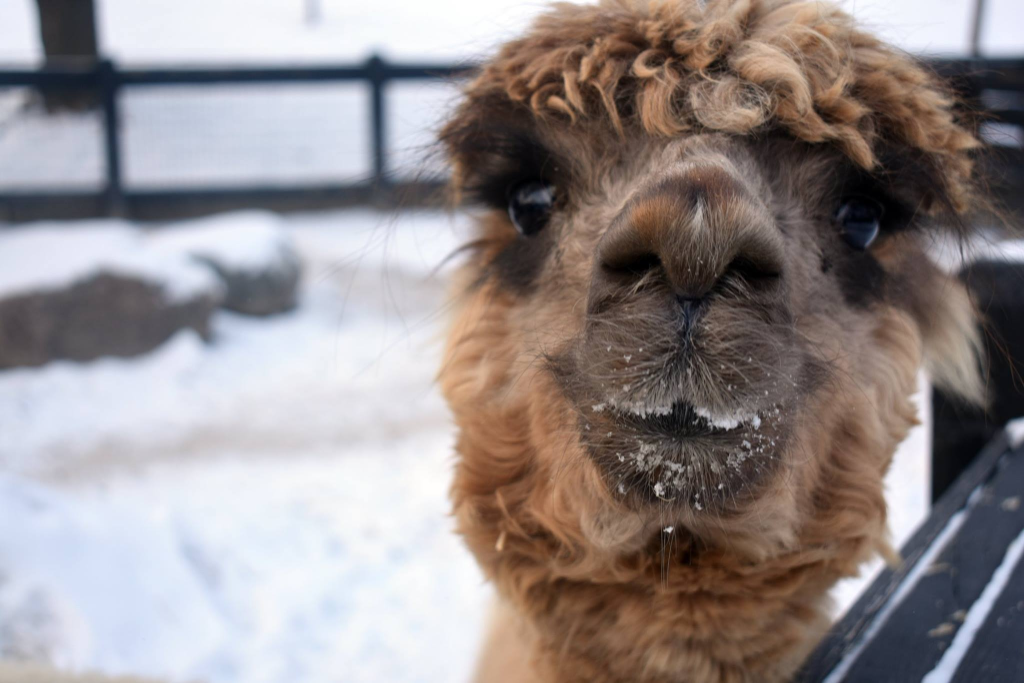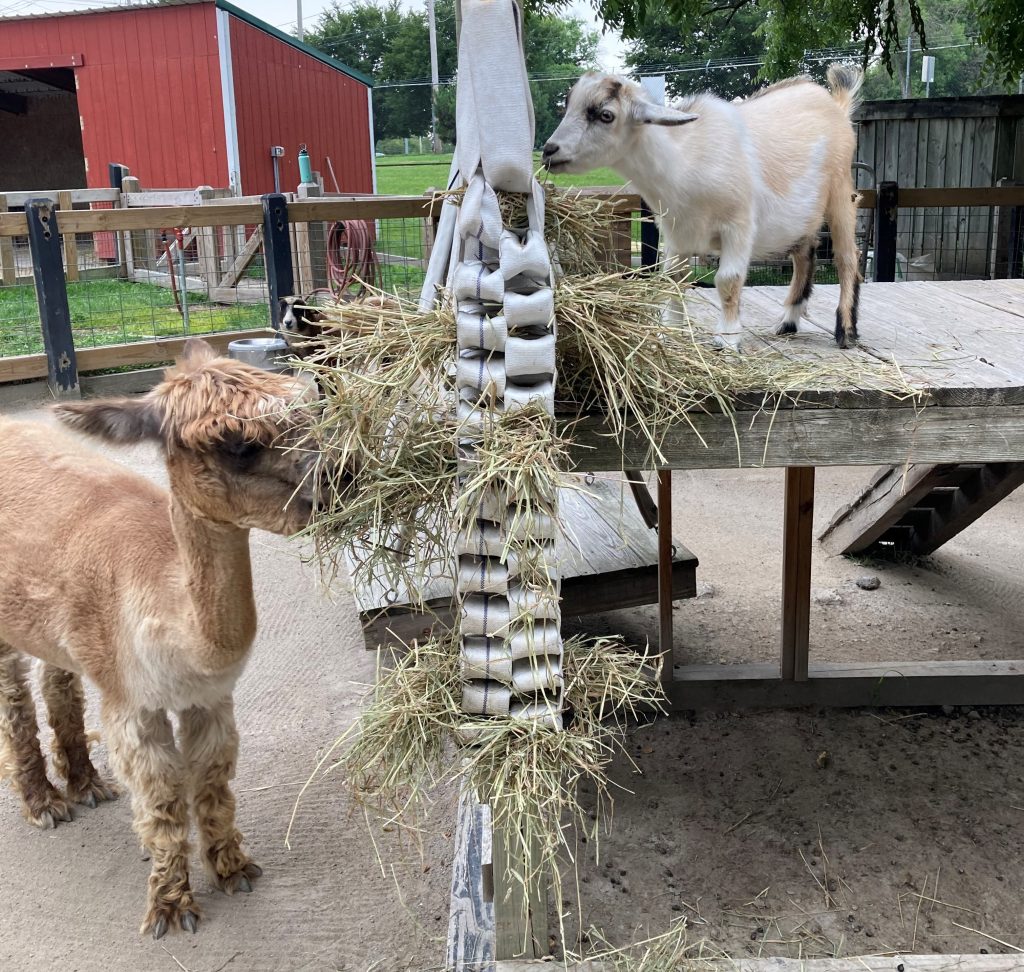


Scientific name
Lama pacos
Common name
Alpaca
Conservation status
Not evaluated (Domesticated)
Taxonomy
- Domain: Eukaryota
- Kingdom: Animalia
- Phylum: Chordata
- Class: Mammalia
- Order: Artiodactyla
- Family: Camelidae
- Genus: Lama
- Species: Lama pacos
Habitat
Originally found in cold, semi-arid high-altitude Andean Plateau in South America. In modern times, alpacas can be found worldwide.
Geographic range
Originally from high-altitude Andes Mountains of South America, specifically in areas of Peru, Bolivia, Ecuador, and northern Chile. In modern times, Alpacas can be found worldwide.
Our Animals Names
Crystal Spartan’s Rose (Rose)
Favorite Enrichment Item
Her kiddie pool “showers.”
Life Span
In the wild: (Domesticated)
In human care: 15 to 20 years
Diet
At the Zoo: Mazuri Llama chow, hay, and alfalfa pellets
Location in Zoo
You can meet Rose in our Contact Yard, located near the playground at the back of the Zoo. She loves hanging out with her barnyard pals—and if you’re lucky, you might catch her enjoying her favorite enrichment activity: a splashy kiddie pool “shower”!
Meet Rose, Our Fluffy Mountain Queen
Say hello to Crystal Spartan’s Rose or just Rose, for short! With her impossibly soft fleece, charming grin, and love for splashing in her kiddie pool “showers,” Rose is the heart of our Contact Yard family—and a fantastic ambassador for alpacas everywhere!
Alpacas like Rose are domesticated members of the camelid family, originally from the high-altitude Andes Mountains of South America. Today, alpacas can be found all over the world—but they remain uniquely adapted to the rugged climate of their ancestral homeland.
That’s Not a Llama!
Alpacas and llamas might look like cousins (because they are!), but they were domesticated from different wild camelids and bred for very different jobs:
- Llamas – Domesticated from the guanaco, llamas are much larger and used primarily for protection and carrying large loads.
- Alpacas – Domesticated from the vicuña, alpacas are smaller and prized for their soft, luxurious fiber.
In fact, one alpaca can produce 5–10 pounds of fleece each year! Unlike wool from a sheep, their fleece is lanolin-free which is better for those who have sensitive skin. These precious fibers are also lightweight and warmer than wool, since they are hollow inside. Plus, it comes in over 20 natural colors!
Mountain Masters
Alpacas evolved to thrive on the Andean Altiplano, where conditions are tough boasting:
- High elevations of 12,000 ft above sea level
- Freezing nighttime temperatures of 32°F
- Low rainfall at just 15–27 inches per year, making for a semi-arid environment
To survive this challenging environment, alpacas developed amazing adaptations:
Higher altitudes equal lower oxygen levels. To combat this, alpacas have oxygen efficient blood cells that are able to carry more oxygen to their muscles and internal organs.
Padded feet instead of hooves. Alpacas have soft, padded feet, that are able to spread along rocky terrain to maintain balance, but still walk softly to reduce impact on fragile mountain vegetation.
Three-chambered stomachs that efficiently digest dry, tough grasses with minimal water loss.
This combination makes alpacas both resilient and resourceful, requiring less food and water than many other grazing animals.
Let’s Talk About That Smile
If you’ve seen Rose up close, you’ve probably noticed her quirky, unforgettable grin. That smile isn’t just adorable—it’s functional!
Alpacas don’t use their tongues to grab food like cows or giraffes. Instead, they use their split upper lips, which move independently, to grab vegetation. They then clip the plants using their bottom incisors against a tough, gum-like dental pad on their upper jaw.
Alpacas have four types of teeth:
- Incisors – located at the front of the lower jaw, used for clipping food
- Premolars & molars – located at the back of the upper and lower jaw, used for chewing
- Fighting teeth – located on the sides of the upper and lower jaw, used in breeding and territorial disputes, especially in males
And no, Rose isn’t chewing bubble gum all day—that’s her food!
What’s a Pseudo-Ruminant?
While cows, goats, and sheep are true ruminants with four-chambered stomachs, alpacas are pseudo-ruminants with three stomach chambers.
Differences include:
- More saliva production, which assists further with digestion
- Lower acidity levels in the first chamber of the stomach allow for more helpful microbes
- Longer digestion time in the second chamber, allowing for the digestion of more nutrients
This makes alpacas super-efficient at extracting moisture and nutrients, which allows them to survive on less food than other grazing species that are not as efficient.
Whether you’re learning about their mountain survival skills, admiring their fleece, or just enjoying a nose-to-nose moment at the Zoo, alpacas like Rose remind us that adaptability, resilience, and a little attitude can go a long way.
Conservation Status
International Union for Conservation of Nature (IUCN) – not evaluated
